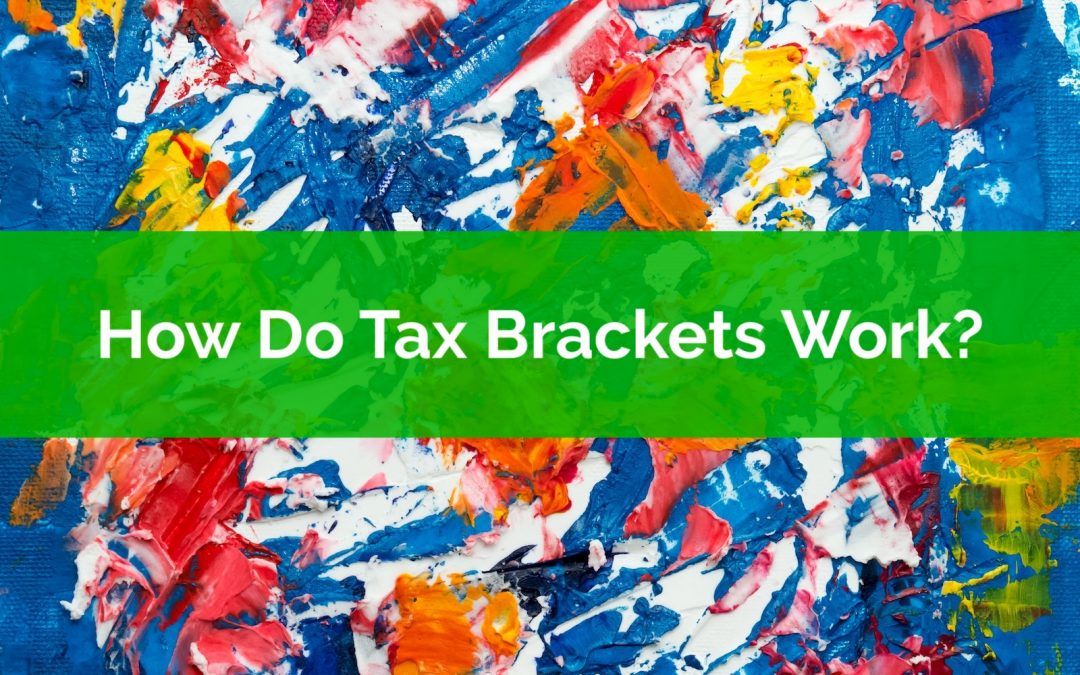“Welcome to the PlanEasy blog! We make personal finance easy.
Thanks for visiting.”
– Owen

How Do Tax Brackets Work? What Is Your Tax Bracket?
How do tax tax brackets work? How do you figure out your tax bracket? These are important questions, especially when you’re trying to make the most of your money.
Figuring out your tax bracket can be very helpful when making personal finance decisions. It can help you decide which type of account to use, for example the TFSA or the RRSP. It can also help you understand how much you’ll keep after receiving a raise. It can help you understand how much tax you’ll pay on any extra spending in retirement. It can also help you understand how large your tax refund will be after making an RRSP contribution.
Understanding how tax brackets work, and what tax bracket you’re in, will help you make smarter financial decisions.
But tax brackets can be confusing, they can feel like a real mess of numbers. And even when you understand how tax brackets work there is something called your Marginal Effective Tax Rate (or METR) that can add to the complexity. This is when we look at both income tax rates plus government benefit clawback rates.
Your METR is more complex and will change over time depending on number of children, partners, age etc. Looking at Marginal Effective Tax Rates can expand the number of tax brackets to 10-20+ and we’ve got a few examples below.
In this post we’re going to show you how tax brackets work with a few visual examples. We’ll break down a few different income levels into their different tax brackets.
We’ll also talk about tax deductions and tax credits and how they affect (or don’t affect) your tax bracket. Lastly, we’ll touch on marginal effective tax rates for a few different situations like one child, two children, and retirement.

How To Get Around The RRSP Age Limit
Did you know that there is an RRSP age limit? After a certain age you can no longer contribute to your RRSP. This is the same age limit that requires you to convert your RRSP to a RRIF.
The rule is, by the end of the year you turn age 71, you must convert your RRSP to a RRIF and you can no longer make RRSP contributions.
It doesn’t matter if you turn age 71 in January or in December, by the end of that year no more personal RRSP contributions can be made and the RRSP must be converted to a RRIF.
Interestingly, although you can’t contribute to a personal RRSP you can continue to earn RRSP contribution room after age 71. If you earn employment income at age 71 or beyond, then you’ll also earn more RRSP contribution room at the typical rate of 18% of earned income.
Seems odd, doesn’t it? You can earn RRSP contribution room after age 71 but you can’t use it (unless you’re in a specific situation which we’ll talk about below).
Similarly, if you have lots of unused RRSP contribution room, this will also carry forward past age 71 too. You might have RRSP contribution room available to use, but you won’t be able to contribute to a personal RRSP.
If you can’t use this RRSP contribution room then why does the CRA track it at all?
Well, there are a few things that can be done to get around the age limit for RRSP contributions and, in the right situation, this could provide some large tax reductions and/or government benefit increases.

If You Had To Purchase Your Home Again Today, Could You Afford It?
One disconcerting phenomenon we’ve noticed recently is that many people, if they had to purchase their home again today, likely couldn’t afford it.
With changes to down payment rules and mortgage qualification, plus the recent increase in home prices, the “numbers” needed to qualify for a home purchase are higher than ever.
The fact is that many people, if they were to purchase again today, would be priced out of their own homes!
There are a few reasons for this, which we’ll explore below, but based on affordability today, many of us might not be able to afford the home we live in today if we had to purchase it again.
We will also share three examples below of people who purchased their home in the past but likely couldn’t afford the same home today if they had to purchase again.

Owen Winkelmolen
Advice-only financial planner, CFP, and founder of PlanEasy.ca
“Welcome to the PlanEasy blog! We make personal finance easy.
Thanks for visiting.”
– Owen
New blog posts weekly!
Tax planning, benefit optimization, budgeting, family planning, retirement planning and more...

How Do Tax Brackets Work? What Is Your Tax Bracket?
How do tax tax brackets work? How do you figure out your tax bracket? These are important questions, especially when you’re trying to make the most of your money.
Figuring out your tax bracket can be very helpful when making personal finance decisions. It can help you decide which type of account to use, for example the TFSA or the RRSP. It can also help you understand how much you’ll keep after receiving a raise. It can help you understand how much tax you’ll pay on any extra spending in retirement. It can also help you understand how large your tax refund will be after making an RRSP contribution.
Understanding how tax brackets work, and what tax bracket you’re in, will help you make smarter financial decisions.
But tax brackets can be confusing, they can feel like a real mess of numbers. And even when you understand how tax brackets work there is something called your Marginal Effective Tax Rate (or METR) that can add to the complexity. This is when we look at both income tax rates plus government benefit clawback rates.
Your METR is more complex and will change over time depending on number of children, partners, age etc. Looking at Marginal Effective Tax Rates can expand the number of tax brackets to 10-20+ and we’ve got a few examples below.
In this post we’re going to show you how tax brackets work with a few visual examples. We’ll break down a few different income levels into their different tax brackets.
We’ll also talk about tax deductions and tax credits and how they affect (or don’t affect) your tax bracket. Lastly, we’ll touch on marginal effective tax rates for a few different situations like one child, two children, and retirement.

How To Get Around The RRSP Age Limit
Did you know that there is an RRSP age limit? After a certain age you can no longer contribute to your RRSP. This is the same age limit that requires you to convert your RRSP to a RRIF.
The rule is, by the end of the year you turn age 71, you must convert your RRSP to a RRIF and you can no longer make RRSP contributions.
It doesn’t matter if you turn age 71 in January or in December, by the end of that year no more personal RRSP contributions can be made and the RRSP must be converted to a RRIF.
Interestingly, although you can’t contribute to a personal RRSP you can continue to earn RRSP contribution room after age 71. If you earn employment income at age 71 or beyond, then you’ll also earn more RRSP contribution room at the typical rate of 18% of earned income.
Seems odd, doesn’t it? You can earn RRSP contribution room after age 71 but you can’t use it (unless you’re in a specific situation which we’ll talk about below).
Similarly, if you have lots of unused RRSP contribution room, this will also carry forward past age 71 too. You might have RRSP contribution room available to use, but you won’t be able to contribute to a personal RRSP.
If you can’t use this RRSP contribution room then why does the CRA track it at all?
Well, there are a few things that can be done to get around the age limit for RRSP contributions and, in the right situation, this could provide some large tax reductions and/or government benefit increases.

If You Had To Purchase Your Home Again Today, Could You Afford It?
One disconcerting phenomenon we’ve noticed recently is that many people, if they had to purchase their home again today, likely couldn’t afford it.
With changes to down payment rules and mortgage qualification, plus the recent increase in home prices, the “numbers” needed to qualify for a home purchase are higher than ever.
The fact is that many people, if they were to purchase again today, would be priced out of their own homes!
There are a few reasons for this, which we’ll explore below, but based on affordability today, many of us might not be able to afford the home we live in today if we had to purchase it again.
We will also share three examples below of people who purchased their home in the past but likely couldn’t afford the same home today if they had to purchase again.
Join over 250,000 people reading PlanEasy.ca each year. New blog posts weekly!
Tax planning, benefit optimization, budgeting, family planning, retirement planning and more...
Join over 250,000 people reading PlanEasy.ca each year. New blog posts weekly!
Tax planning, benefit optimization, budgeting, family planning, retirement planning and more...
